#Indigenous Peoples
Text






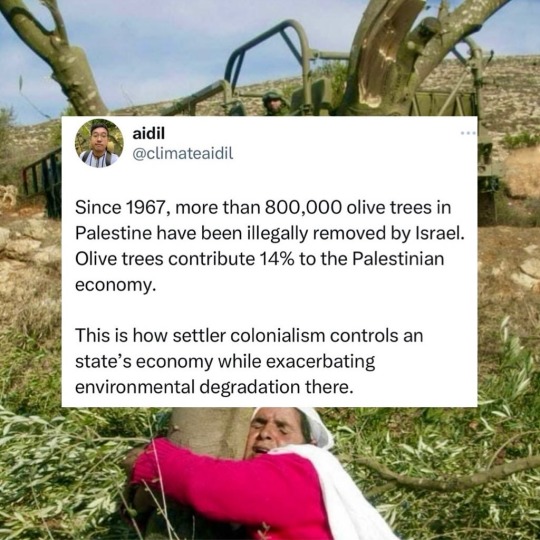

🌿An Earth Day fusion repost from @theimeu and @muchachafanzine.
🌿In honor of Earth Day, please visit @zaytoun_cic, @handmadepalestine, or @plant.eenolijfboom to plant an olive tree in Palestine. 🕊
🌿From @theimeu:
This Earth Day, we mourn the 34,000+ Palestinians killed by Israel in Gaza and Israel’s continued degradation of Gaza’s land, water, and other natural resources that make life possible for Palestinians.
In the past 6 months alone, Israel has destroyed farmland and greenhouses, contaminated natural resources with hazardous materials, bombed key water purifying infrastructure and wells, and created conditions for epidemics caused by an extreme excess of sewage, waste, and pollution.
Israel’s systematic destruction of Gaza’s environment is part of its goal of making life for Palestinians in Gaza unlivable.
Link in bio to contact your reps and urge an immediate, permanent ceasefire and the immediate suspension of all arms and funds to Israel.
Sources: The Guardian, Scientific American
🌿From @muchachafanzine:
Reminder this #EarthDay that from Turtle Island to Pa1estine, your environmentalism doesn’t mean sh!t if you don’t support giving the #LandBack to Indigenous people. 🤷🏽♀️
#land back#indigenous rights#indigenous resistance#indigenous peoples#human rights#palestine#free palestine#gaza#ecocide#ecology#environmental activism#environment#olive trees#free gaza#stop the genocide#earth day#natural resources#farming#land stewardship#israel#israel is committing genocide#israel is a terrorist state#israeli apartheid#israeli occupation#end the occupation#ceasefire now
60 notes
·
View notes
Text
Crow Chiefs in Washington. 1880. Standing - A. M. Quivey, Two Belly, A. R. Keller, and Tom Stewart. Seated - Old Crow, Medicine Crow, Long Elk, Plenticus [Plenty Coups], and Pretty Eagle. Photo by C.M. Bell.

21 notes
·
View notes
Text
Genocide experts warn that India is about to genocide the Shompen people
Who are the Shompen?
The Shompen are an indigenous culture that lives in the Great Nicobar Island, which is nowadays owned by India. The Shompen and their ancestors are believed to have been living in this island for around 10,000 years. Like other tribes in the nearby islands, the Shompen are isolated from the rest of the world, as they chose to be left alone, with the exception of a few members who occasionally take part in exchanges with foreigners and go on quarantine before returning to their tribe. There are between 100 and 400 Shompen people, who are hunter-gatherers and nomadic agricultors and rely on their island's rainforest for survival.

Why is there risk of genocide?
India has announced a huge construction mega-project that will completely change the Great Nicobar Island to turn it into "the Hong Kong of India".
Nowadays, the island has 8,500 inhabitants, and over 95% of its surface is made up of national parks, protected forests and tribal reserve areas. Much of the island is covered by the Great Nicobar Biosphere Reserve, described by UNESCO as covering “unique and threatened tropical evergreen forest ecosystems. It is home to very rich ecosystems, including 650 species of angiosperms, ferns, gymnosperms, and bryophytes, among others. In terms of fauna, there are over 1800 species, some of which are endemic to this area. It has one of the best-preserved tropical rain forests in the world.”
The Indian project aims to destroy this natural environment to create an international shipping terminal with the capacity to handle 14.2 million TEUs (unit of cargo capacity), an international airport that will handle a peak hour traffic of 4,000 passengers and that will be used as a joint civilian-military airport under the control of the Indian Navy, a gas and solar power plant, a military base, an industrial park, and townships aimed at bringing in tourism, including commercial, industrial and residential zones as well as other tourism-related activities.
This project means the destruction of the island's pristine rainforests, as it involves cutting down over 852,000 trees and endangers the local fauna such as leatherback turtles, saltwater crocodiles, Nicobar crab-eating macaque and migratory birds. The erosion resulting from deforestation will be huge in this highly-seismic area. Experts also warn about the effects that this project will have on local flora and fauna as a result of pollution from the terminal project, coastal surface runoff, ballasts from ships, physical collisions with ships, coastal construction, oil spills, etc.
The indigenous people are not only affected because their environment and food source will be destroyed. On top of this, the demographic change will be a catastrophe for them. After the creation of this project, the Great Nicobar Island -which now has 8,500 inhabitants- will receive a population of 650,000 settlers. Remember that the Shompen and Nicobarese people who live on this island are isolated, which means they do not have an immune system that can resist outsider illnesses. Academics believe they could die of disease if they come in contact with outsiders (think of the arrival of Europeans to the Americas after Christopher Columbus and the way that common European illnesses were lethal for indigenous Americans with no immunization against them).
And on top of all of this, the project might destroy the environment and the indigenous people just to turn out to be useless and sooner or later be abandoned. The naturalist Uday Mondal explains that “after all the destruction, the financial viability of the project remains questionable as all the construction material will have to be shipped to this remote island and it will have to compete with already well-established ports.” However, this project is important to India because they want to use the island as a military and commercial post to stop China's expansion in the region, since the Nicobar islands are located on one of the world's busiest sea routes.
Last year, 70 former government officials and ambassadors wrote to the Indian president saying the project would “virtually destroy the unique ecology of this island and the habitat of vulnerable tribal groups”. India's response has been to say that the indigenous tribes will be relocated "if needed", but that doesn't solve the problem. As a spokesperson for human rights group Survival International said: “The Shompen are nomadic and have clearly defined territories. Four of their semi-permanent settlements are set to be directly devastated by the project, along with their southern hunting and foraging territories. The Shompen will undoubtedly try to move away from the area destroyed, but there will be little space for them to go. To avoid a genocide, this deadly mega-project must be scrapped.”
On 7 February 2024, 39 scholars from 13 countries published an open letter to the Indian president warning that “If the project goes ahead, even in a limited form, we believe it will be a death sentence for the Shompen, tantamount to the international crime of genocide.”
How to help
The NGO Survival International has launched this campaign:
From this site, you just need to add your name and email and you will send an email to India's Tribal Affairs Minister and to the companies currently vying to build the first stage of the project.
Share it with your friends and acquittances and on social media.
Sources:
India’s plan for untouched Nicobar isles will be ‘death sentence’ for isolated tribe, 7 Feb 2024. The Guardian.
‘It will destroy them’: Indian mega-development could cause ‘genocide’ and ‘ecocide’, says charity, 8 Feb 2024. Geographical.
Genocide experts call on India's government to scrap the Great Nicobar mega-project, Feb 2024. Survival International.
The container terminal that could sink the Great Nicobar Island, 20 July 2022. Mongabay.
[Maps] Environmental path cleared for Great Nicobar mega project, 10 Oct 2022. Mongabay.
#shompen#genocide#stop genocide#india#indigenous#indigenous peoples#indigenous rights#human rights#anthropology#stateless nations#end occupation#andaman and nicobar islands#nicobar islands#great nicobar#💬#asia#geopolitics#ecocide#sustainability
17K notes
·
View notes
Text
"In a historic “first-of-its-kind” agreement the government of British Colombia has acknowledged the aboriginal ownership of 200 islands off the west coast of Canada.
The owners are the Haida nation, and rather than the Canadian government giving something to a First Nation, the agreement admits that the “Xhaaidlagha Gwaayaai” or the “islands at the end of world,” always belonged to them, a subtle yet powerful difference in the wording of First Nations negotiating.
BC Premier David Eby called the treaty “long overdue” and once signed, will clear the way for half a million hectares (1.3 million acres) of land to be managed by the Haida.
Postal service, shipping lanes, school and community services, private property rights, and local government jurisdiction, will all be unaffected by the agreement, which will essentially outline that the Haida decide what to do with the 200 or so islands and islets.
“We could be facing each other in a courtroom, we could have been fighting each other for years and years, but we chose a different path,” said Minister of Indigenous Relations of BC, Murray Rankin at the signing ceremony, who added that it took creativity and courage to “create a better world for our children.”
Indeed, making the agreement outside the courts of the formal treaty process reflects a vastly different way of negotiating than has been the norm for Canada.
“This agreement won’t only raise all boats here on Haida Gwaii – increase opportunity and prosperity for the Haida people and for the whole community and for the whole province – but it will also be an example and another way for nations – not just in British Columbia, but right across Canada – to have their title recognized,” said Eby.
In other words, by deciding this outside court, Eby and the province of BC hope to set a new standard for how such land title agreements are struck."
-via Good News Network, April 18, 2024
#canada#indigenous#first nations#haida#british columbia#canadian politics#land back#indigenous peoples#indigenous rights#indigenous land
10K notes
·
View notes
Text

From Levantine_gay on insta
#arab imperialism#arab colonialism#jumblr#i stand with israel#say no to settler colonialism#colonization#colonialism#indigenous peoples#first nations#israel#assyria#kurdistan#imazighen#indigenous swana
1K notes
·
View notes
Text
The Tolowa Dee-ni’ Nation, Resighini Rancheria, and Cher-Ae Heights Indian Community designated the first ever Indigenous Marine Stewardship Area (IMSA) in the U.S. along the northern California coast.
The tribes plan to steward nearly 700 mi2 (1,800 km2) of their ancestral ocean and coastal territories from the California-Oregon border to Little River near the town of Trinidad, California.
As sovereign nations, the tribes say they’re not seeking state or federal agencies’ permission to assert tribally led stewardship rights and responsibilities; rather, they want to establish cooperative relationships recognizing their inherent Indigenous governance authority.
The tribes aim to restore traditional ecological knowledge and management practices that sustained the area’s natural abundance before colonial disruption.
#!!!!#good news#science#environmentalism#nature#environment#animals#conservation#indigenous people#california#stewardship#indigenous peoples#usa#climate change
2K notes
·
View notes
Text
963 notes
·
View notes
Text
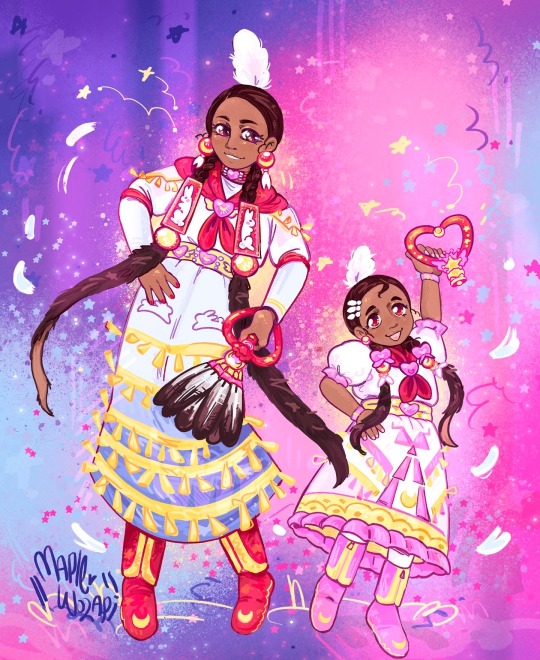



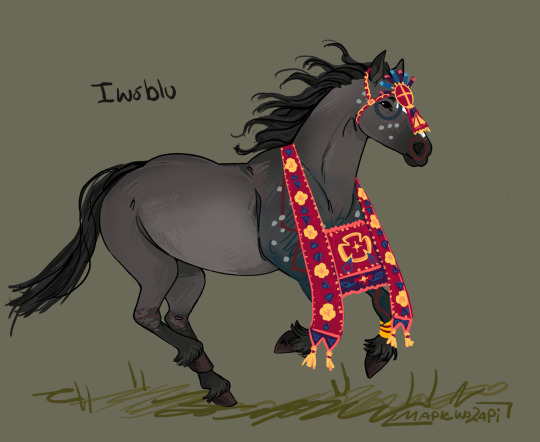
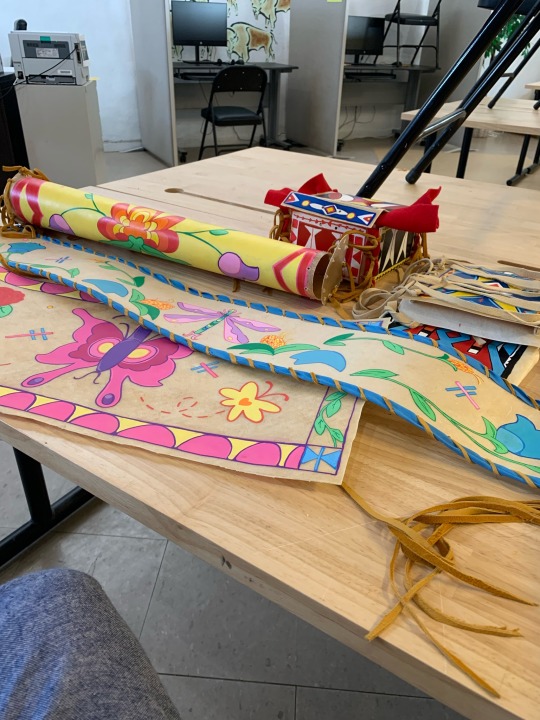


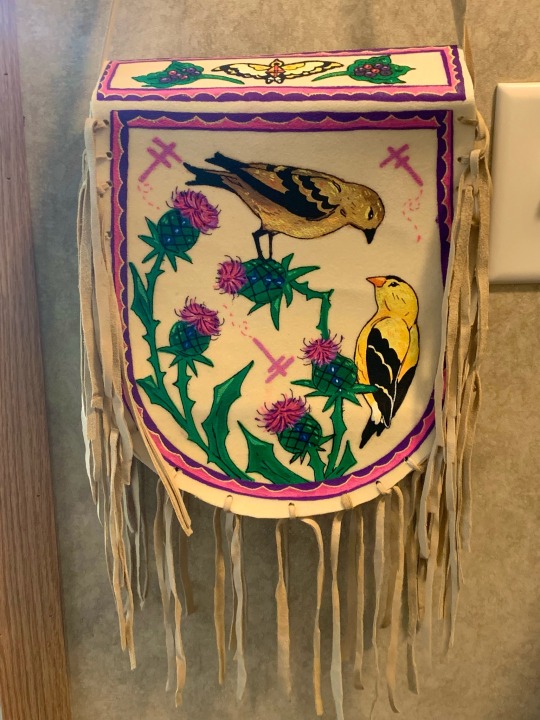

It’s indigenous peoples day hurryay, I love being who I am and making my art. I could be indigenous all day 😝🍇🍓🩷 I love being Arikara and I love being Lakota 💖🩷💗
1K notes
·
View notes
Text
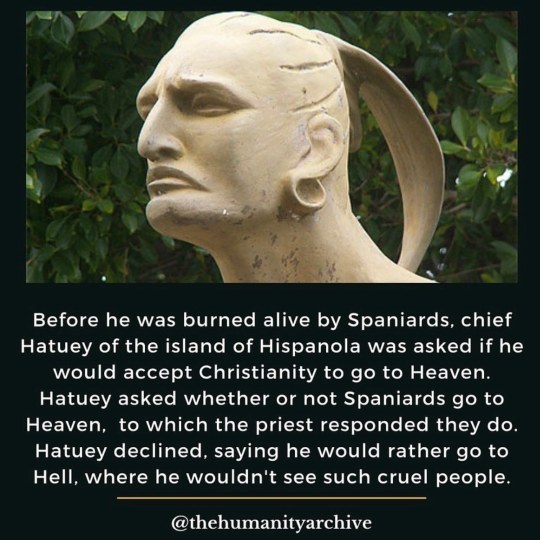
#chief hatuey#hispaniola#spaniards#christianity#heaven#hell#colonization#resistance#indigenous peoples#colonialism#imperial expansion#conquest#settlement#exploitation#indigenous displacement#cultural assimilation
387 notes
·
View notes
Text
Understanding Princess Mononoke

People on twitter have asked me to write this up, after speaking just a bit about it on the bird plattform.
So, recently I rewatched Princess Mononoke and talked about it with a friend, who is Japanese with a degree in Japanese history. And I think some of it was rather interesting.
Some of you might already know this. But others might not. So just endulge me for a moment.
Let me start with Ashitaka. The movie does mention that he is Emishi - but many people are not aware, what this means.
See, Japan had quite a lot of indigenous cultures (I will talk more about those tomorrow). Most might know the Ainu, as they are still around today. Fewer might know about the Ryukyuan people of Okinawa, who are also still around. But there are several indigenous people, who have once lived in Japan, but whose culture hence had become instinct. The Emishi are one of them. They lived in Northern Honshu and their culture disappeared around the 10th century.
The movie, of course, takes place in the late 14th century, which is why the monk notes, that he knows what Ashitaka is, but will keep it secret. The idea is that Ashtakas little village had stayed secret to avoid being destroyed. As such Ashitaka has a different relation to the nature and the nature spirits than the other characters of the movie, who are to engrossed in the mainly Buddhist culture.
Another thing that has to be addressed is Iron Town and Lady Eboshi's people. According to the official Japanese material to the movie, Lady Eboshi once was a prostitute herself, who happened to get power by getting taken to China. Which is why she is in possession of the Chinese gun technology. She then decided to use that to allow herself power - but not entirely out of selfish reasons. Because she, of course, takes in untouchables. Japan, to this day, has an untouchable caste. Which are people who work certain "dirty" jobs or sicknesses. Most of the women in Iron Town are prostitutes who Eboshi had bought free from their brothels. And she wants to have a town where those people can live good lives.
Because of this she has to hope for the support of the Emperor, as the Samurai lords in the surrounding areas do not want her there.
Which brings me to the finale and killing the god. Here is a thing that you have to understand of Japanese history. The original indigenous people of Japan believed in nature spirits, that at times were actually gods. Especially mountain gods. As Buddhism spread (again, something I will talk about more tomorrow) the upper class went out to kill the gods.
Old Japanese history will talk about people killing gods in the same way, as we talk about St. Patrick and the snakes of Ireland. As if it has really happened.
And that is something that Eboshi tries to do. It is killing the old god, but more than that: killing the old culture.
One of the central conflicts the movie shows is, that the nature spirits are loosing their self-awareness. That they revert to normal animals. Because the indigenous culture that revered the nature spirits is fading away.
Which then is, why Ashitaka, who comes from one of those indigenous cultures, is the main character of the movie. Because he still has this connection to the nature spirit, that the other people have lost.
Yes, the movie is very solarpunk in hindsight. But it also understands what it means to loose connection to nature.
And I find that really beautiful.

#anime#anime movie#ghibli#studio ghibli#princess mononoke#solarpunk#indigenous peoples#nature#japanese history
799 notes
·
View notes
Text
Oaxaca Needs Help!!
Hi, there is currently a fire that started in San Lucas Quiavini, Oaxaca, that has now grown and is burning more Indigenous Zapotec communities. Unfortunately, five volunteers died as a result of the fires: Rafael Antonio Morales, Pedro Curiel Diego, José Hernández López, Felipe García, and Celso Diego. The communities are asking for help.
Here are some places where you can help financially:


For Celso Diego's family
And Emergency Funds right here
If you cannot donate, that is totally fine! Reblogs are very much appreciated!
225 notes
·
View notes
Text

It’s Indigenous People's Day! As we honor this significant day, learn about 14 influential Native American figures 👇!
#indigenous people’s day#indigenous#indigenous rights#indigenous women#indigenous peoples#indigenous people#indigenous culture#native#natives#native american#native americans#ndn#american indian#first nations#land back#landback
394 notes
·
View notes
Text
"The Yurok will be the first Tribal nation to co-manage land with the National Park Service under a historic memorandum of understanding signed on Tuesday [March 19, 2024] by the tribe, Redwood national and state parks, and the non-profit Save the Redwoods League, according to news reports.
The Yurok tribe has seen a wave of successes in recent years, successfully campaigning for the removal of a series of dams on the Klamath River, where salmon once ran up to their territory, and with the signing of a new memorandum of understanding, the Yurok are set to reclaim more of what was theirs.
Save the Redwoods League bought a property containing these remarkable trees in 2013, and began working with the tribe to restore it, planting 50,000 native plants in the process. The location was within lands the Yurok once owned but were taken during the Gold Rush period.
Centuries passed, and by the time it was purchased it had been used as a lumber operation for 50 years, and the nearby Prairie Creek where the Yurok once harvested salmon had been buried.
Currently located on the fringe of Redwoods National and State Parks which receive over 1 million visitors every year and is a UNESCO Natural Heritage Site, the property has been renamed ‘O Rew, a Yurok word for the area.
“Today we acknowledge and celebrate the opportunity to return Indigenous guardianship to ‘O Rew and reimagine how millions of visitors from around the world experience the redwoods,” said Sam Hodder, president and CEO of Save the Redwoods League.
Having restored Prarie Creek and filled it with chinook and coho salmon, red-legged frogs, northwestern salamanders, waterfowl, and other species, the tribe has said they will build a traditional village site to showcase their culture, including redwood-plank huts, a sweat house, and a museum to contain many of the tribal artifacts they’ve recovered from museum collections.
Believing the giant trees sacred, they only use fallen trees to build their lodges.
“As the original stewards of this land, we look forward to working together with the Redwood national and state parks to manage it,” said Rosie Clayburn, the tribe’s cultural resources director.
It will add an additional mile of trails to the park system, and connect them with popular redwood groves as well as new interactive exhibits.
“This is a first-of-its-kind arrangement, where Tribal land is co-stewarded with a national park as its gateway to millions of visitors. This action will deepen the relationship between Tribes and the National Park Service,” said Redwoods National Park Superintendent Steve Mietz, adding that it would “heal the land while healing the relationships among all the people who inhabit this magnificent forest.”"
-via Good News Network, March 25, 2024
#indigenous#land back#indigenous issues#first nations#native american#indigenous peoples#yurok#yurok tribe#national parks service#national park#redwoods#california#trees#trees and forests#united states#good news#hope#indigenous land
4K notes
·
View notes
Text

684 notes
·
View notes
Text
A historically and culturally significant lake in California's San Joaquin Valley that first disappeared in 1898 has returned after last year's atmospheric rivers flooded the region.
Tulare Lake, known as Pa'ashi — or "big water" — to the local Tachi Yokut Tribe, was "once the largest body of freshwater west of the Mississippi River," per Earth.com.
Vivian Underhill, who published a paper on Tulare Lake as a postdoctoral research fellow at Northeastern University, noted it was mostly sustained by snowmelt from the Sierra Nevada mountains and was 100 miles long and 30 miles wide at its peak.
The lake served as a key resource for Indigenous Peoples and wildlife and was once robust enough to allow steamships to transport agricultural goods throughout the state.
However, government officials persecuted and displaced the indigenous communities in the late 1800s to convert the area for farming through draining and irrigation.
"They really wanted to get [land] into private hands so that indigenous land claims — that were ongoing at that time — would be rendered moot by the time they went through the courts," Underhill told the Northeastern Global News. "It was a deeply settler colonial project."
While Pa'ashi periodically reappeared during the 1930s, '60s, and '80s, the barrage of atmospheric rivers California experienced in 2023 revived the lake despite the region receiving just 4 inches of rain annually. According to Underhill, Tulare Lake is now the same size as Lake Tahoe, which is 22 miles long and 12 miles wide.
Its resurgence has led to the return of humid breezes at least 10 degrees cooler than average and native species, including fish, amphibians, and birds. Lake Tulare was once a stopping point for migratory birds traveling a route known as the Pacific Flyway.
"Something that continues to amaze me is — [the birds] know how to find the lake again," Underhill told the Northeastern Global News. "It's like they're always looking for it."
The Tachi Yokuts have also returned to Pa'ashi's shores, once again practicing their ceremonies and planting tule reeds and native sage.
#submission#!!!#good news#lakes#Tulare Lake#Pa'ashi#big water#water#water is life#revitalization#anti colonialism#decolonization#nature#Tachi Yokut#indigenous peoples
407 notes
·
View notes
